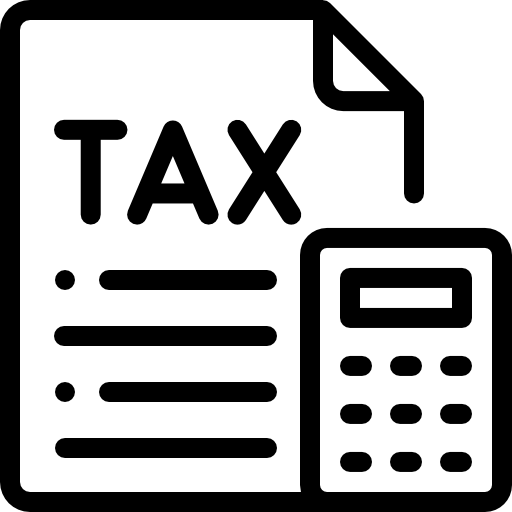The OECD’s BEPS Pillar Two regulations are transforming global tax compliance, requiring multinational enterprises (MNEs) to maintain a minimum 15% effective tax rate (ETR) across jurisdictions. These regulations introduce complex data collection, mandatory tax calculations and rigorous reporting requirements, making compliance a significant challenge for finance and tax teams.
For CFOs, this directive strikes at the heart of the financial close and consolidation processes. The challenge is clear: manual processes and disconnected systems are no longer sustainable. Ensuring compliance requires automation, integration and strategic tax planning, all while maintaining transparency and audit readiness.
Inulta helps businesses transform compliance into a strategic advantage. As a Platinum Partner of Wolters Kluwer, we specialize in CCH® Tagetik Global Minimum Tax, an end-to-end solution that automates BEPS Pillar Two compliance, reduces risk and provides real-time financial insights.
Key technology drivers for Pillar Two compliance
1. Automating tax data collection & calculations

Pillar Two compliance demands granular tax data collection, multi-jurisdictional calculations and precise reporting based on massive volumes of financial and non-financial data. Spreadsheets and legacy systems are not built to handle this level of complexity, leading to errors, inefficiencies and misalignment across jurisdictions.
CCH® Tagetik Global Minimum Tax solution automates:
- Data ingestion and standardization – aggregating finance and tax data from multiple sources.
- Top-up tax and ETR calculations – ensuring OECD-compliant reporting.
- Automated reporting workflows – streamlining CbCR (Country-by-Country Reporting) and tax disclosures.
Business impact: Finance teams gain greater visibility into tax liabilities, reducing manual effort and ensuring compliance without disrupting financial close.
2. Aligning finance & tax for seamless compliance

Finance and tax teams often operate in separate systems, leading to misalignment between tax provisions and financial statements. Without integration, there’s a risk of inconsistent reporting, delayed close cycles, and inaccurate tax positions.
How CCH® Tagetik Global Minimum Tax helps:
- Seamless integration between tax and financial consolidation, ensuring ETR calculations align with financial statements.
- Automated reconciliation of tax data, reducing discrepancies between local GAAP, IFRS and tax reporting.
- A single source of truth, eliminating the need for manual adjustments between tax and finance teams.
Business impact: CFOs ensure tax compliance is embedded into financial close, reducing reconciliation time and improving reporting accuracy.
3. Data integrity, audit readiness and transparency

Regulators are demanding greater transparency and auditability in tax reporting. Finance leaders must ensure that all tax-related data is accurate, traceable and defensible, or risk financial penalties and reputational damage.
CCH® Tagetik Global Minimum Tax provides:
- Built-in data validation to maintain accuracy in tax calculations.
- End-to-end audit trails, tracking every tax adjustment and calculation for full transparency.
- Centralized compliance reporting, giving finance leaders confidence in data integrity.
Business impact: Reduces audit preparation time, minimizes compliance risks and ensures full visibility into Pillar Two tax positions.
4. Using Tax Analytics to drive financial strategy

Pillar Two has a direct impact on cash flow, profitability, and business structure. CFOs need real-time insights to assess how tax liabilities affect financial performance and evaluate alternative tax strategies.
How CCH® Tagetik Global Minimum Tax helps:
- What-if scenario modeling, allowing CFOs to assess the impact of different tax structures.
- Predictive analytics, helping finance teams anticipate future tax liabilities.
- Dynamic dashboards, offering real-time tracking of ETR and top-up tax exposures.
Business impact: Finance leaders can make informed decisions to optimize tax positions, manage cash flow, and align tax strategy with business objectives.
5. Cloud-based compliance for global scalability

Coordination across multiple jurisdictions is required, making it difficult to ensure consistency, manage data centrally and adapt to evolving regulations. On-premise solutions are often too rigid to keep up and can’t meet this compliance.
CCH® Tagetik Global Minimum Tax ensures:
- Cloud-based (and on-premises) compliance management, allowing global teams to collaborate in real time.
- Scalable infrastructure, adapting to regulatory changes without IT overhead.
- Enterprise-grade security, protecting sensitive financial and tax data.
Business impact: Future-proofs compliance operations, ensuring agility as tax regulations evolve.
Inulta as your compliance partner
With a team of over 100 expert consultants, Inulta specializes in seamless CCH® Tagetik integration, ensuring that your compliance processes are automated, accurate, efficient and scalable.
By implementing advanced Corporate/ Enterprise Performance Management (CPM/ EPM) solutions, companies not only meet OECD Pillar Two requirements but also increase operational efficiency, enhance transparency, and gain a competitive edge in the global market.
CCH® Tagetik Global Minimum Tax is a purpose-built solution that automates data collection, tax calculations and reporting, making it easy to align with local financial close and group consolidation. By integrating finance and tax activities, it provides CFOs and tax leaders with real-time insights into the financial and operational impact of Pillar Two regulations, helping them optimize tax strategies and reduce risk.
Ensure seamless Pillar Two compliance with Inulta. Book a call with our experts today.
